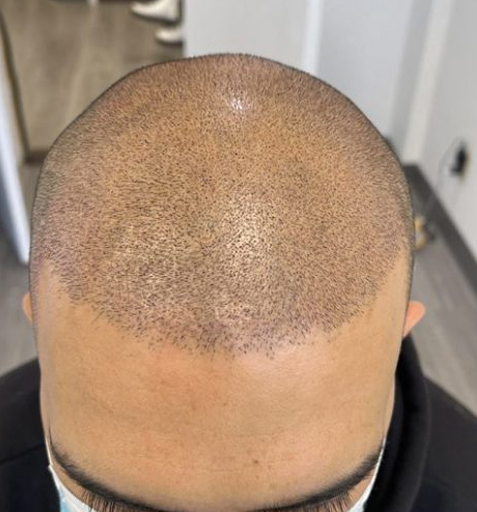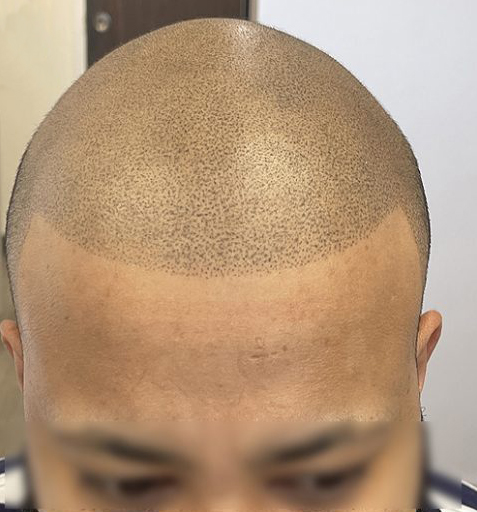
Table of Contents
Scalp Micropigmentation (SMP) is an innovative, non-invasive solution for individuals facing hair loss, thinning hair, or receding hairlines. This procedure involves the application of pigments to the scalp, mimicking natural hair follicles to create the look of fuller, thicker hair.
Whether you’re looking to restore your hairline, enhance density, or cover scars, SMP provides realistic and long-lasting results. It offers a low-maintenance, no-surgery alternative to traditional hair restoration methods, making it an ideal choice for both men and women seeking a natural, effective solution to hair loss.
This article will explore comprehensive information about Scalp Micropigmentation how it works, its advantages, and how to choose the right SMP clinic for optimal results.
Table of Contents
Scalp Micropigmentation is a non-invasive procedure that helps people suffering from hair loss, pattern baldness, thinning hair, hairline recession, and hair transplant scarring. By depositing pigment into the scalp using precise micro-needles, SMP creates the appearance of hair follicles and thickens hair, giving it a fuller appearance.
This technique can repair receding hairlines, add density to thinning areas, and create a buzz-cut style for bald people. SMP uses cosmetic pigmentation and cutting-edge machinery to blend into existing hair for a flawless look, with little to no upkeep required. A free consultation with a qualified professional can help determine if SMP is the right hair loss solution.
Scalp Micropigmentation for men is a popular, non-invasive solution for receding hairline and thinning hair. This cosmetic procedure uses tiny pigment deposits to mimic hair follicles, creating a natural, fuller hairline that blends seamlessly with existing hair.
Unlike hair transplants, SMP requires no surgery, recovery, or ongoing maintenance, making it a low-maintenance, long-lasting option. Specialized needles and pigments replicate the appearance of real hair, ensuring a subtle, natural look. SMP can also enhance density, cover scars, or create a buzz-cut effect, offering a versatile and confidence-boosting solution for those seeking an effective approach to hair restoration.
Scalp Micropigmentation for women offers an effective solution for hair thinning, alopecia, or receding hairlines. This non-invasive treatment involves applying pigments to the scalp, creating the appearance of fuller, thicker hair.
SMP is ideal for women looking to enhance hair density without surgery or ongoing maintenance. It seamlessly blends with natural hair, giving a realistic and undetectable outcome. Whether covering bald spots, camouflaging scars, or reducing the contrast of thinning areas, SMP provides a confidence-boosting and long-lasting solution. Tailored to individual needs, it’s a versatile and transformative option for women seeking to restore their hair’s natural look effortlessly.
Scalp Micropigmentation (SMP) works by depositing tiny pigment dots into the scalp using specialized micro-needles. These pigments mimic the appearance of natural hair follicles, creating the illusion of fuller hair or a closely shaved head. Here’s a step-by-step breakdown of the process:
The best candidates for Scalp Micropigmentation (SMP) are individuals looking for a non-invasive, low-maintenance solution for hair loss or thinning. Ideal candidates include:
Scalp Micropigmentation (SMP) offers numerous advantages for individuals dealing with hair loss or thinning:
SMP is a great solution for many, it’s important to weigh these potential drawbacks before deciding if it’s the right option for you. There are some disadvantages to consider:
The cost of Scalp Micropigmentation varies based on the amount of coverage required, typically ranging from $3,000 to $4,000. This pricing is determined by the size of the treated area and the complexity of the procedure.
Finding the right Scalp Micropigmentation (SMP) clinic is crucial to achieving the best results. Here are some key factors to consider when selecting a clinic:
Experience and Reputation: Choose a clinic with experienced professionals who specialize in SMP. Look for client reviews, before-and-after photos, and testimonials to gauge their success rate and credibility.
Certifications and Training: Ensure the SMP Artists are properly trained and certified in SMP procedures. This ensures they follow proper techniques and safety protocols.
Portfolio of Work: A reputable clinic should have a portfolio showcasing real client results. Review these examples to see if their style and techniques align with your expectations.
Consultation: A professional clinic will offer a free consultation to discuss your specific needs, expectations, and desired outcomes. This is a good opportunity to ask questions and assess the clinic’s knowledge.
Hygiene and Safety: Choose a clinic that maintains high standards of cleanliness and follows all health and safety guidelines to ensure a safe and sterile environment.
Cost Transparency: A reliable clinic will provide clear pricing information upfront and explain what is included in the cost of treatment.
Aftercare Support: Ensure the clinic offers post-treatment care and advice to help maintain your results and prevent complications.
In conclusion, Scalp Micropigmentation (SMP) is a powerful solution for hair loss. It helps restore the appearance of a fuller, thicker head of hair. You can use SMP for receding hairlines, bald spots, and thinning areas. It is a non-invasive, low-maintenance option compared to traditional hair restoration methods. You can enjoy immediate results without the need for surgery or extended recovery periods.
SMP provides natural-looking, long-lasting outcomes. You should choose a skilled, experienced practitioner for the best results. A reputable clinic will ensure high standards and support throughout the process. SMP is a reliable option to regain your confidence.






© 2024 HAIRTATTOO.CA | Scalp Micropigmentation & Trichology Centre
